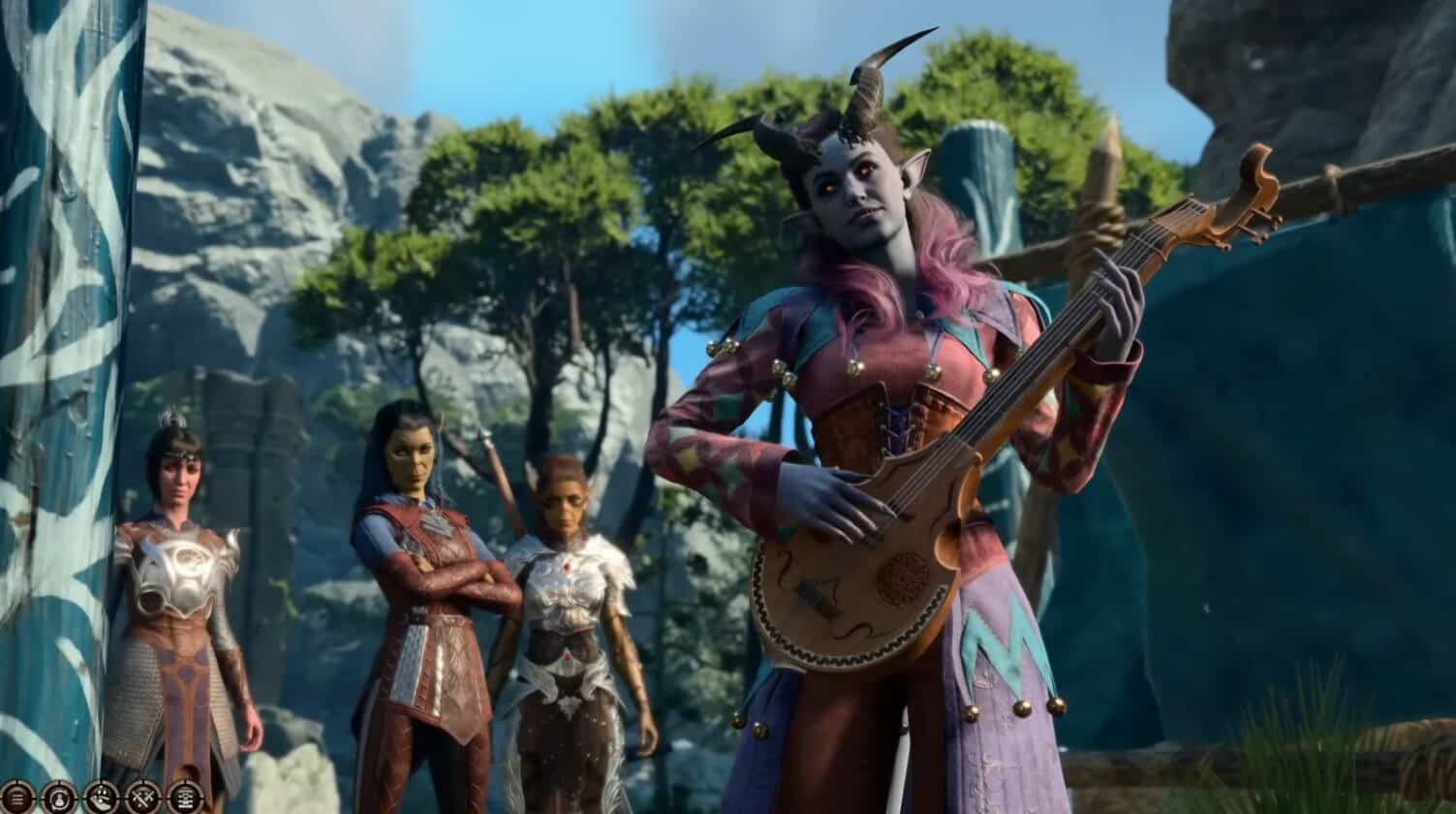Bard is a versatile class in Baldur’s Gate 3 that is capable of bringing out magic through its music and vocals. It is the perfect class for you if you want to experience a little bit of everything the game has to offer. They have the ability to inflict a ton of debuffs on the enemy while buffing their own party. They also are quite entertaining so at the very least, you won’t be bored with them.
You get starting instruments such as Hand Drum and Flute while playing as a Bard. This influences your spells when you cast them. They are a good way to distract the crowd and do actions in battle without being noticed.
Bard Hit Points
In Baldur’s Gate 3, Hit Points mean how much punishment a character can take. The more the HP of a character, the tougher it is to take that character down in combat. Bards aren’t particularly durable or squishy so they get a Hit Dice of 1d8. They get 8 hit points at level 1 plus the bonus from their Constitution modifier. They get 5 HP at each subsequent level after that plus their Constitution bonus.
Bard Class Actions
The Hallmark of the Bard class is definitely their unique action, Bardic Inspiration. You start at level 1 with this action and it will change depending upon which Bard College of Subclass you decide to go with. At level 1, its basic function is to inspire allies to go beyond their innate abilities. With this, your allies get a 1d6 bonus to their next attack roll, ability check, or saving throws. You can use this feature three times, after which it needs to be recharged through a Long Rest.
Bardic Inspiration is fueled directly by Charisma and Dexterity. Charisma helps improve the Bard’s spell-casting techniques in Baldur’s Gate 3. Dexterity is also important for Initiative, which decides the order in which a turn will go.
Bard Fighting Style
There is no specific fighting style for a general Bard except for being a supporting character in the backlines. However, the College of Swords subclass does have a couple of fighting styles, including Dueling. Dueling means using a weapon in a single hand with nothing in the offhand. It gives you a +2 bonus in damage rolls with that weapon.
The second fighting style you get with Swords College is Two-Weapon Fighting Style or Dual-wielding weapon style. This one allows you to use a weapon in each hand and add your ability modifier to the damage of the offhand attack.
Bard Proficiencies
In Baldur’s Gate 3, a class can only use equipment and skills in which they have gained proficiency. Using a weapon, shield, or armor without being proficient in it can lead to a penalty.
Weapon: In terms of weapons, Bards can use Baldur’s Gate 3 Finesse Weapons like Darts, Daggers, Scimitars, and Rapiers, which are powered by Dexterity instead of Strength.
Armor: Bards are proficient in Light Amor.
Skill Proficiency: At the time of character creation as a bard, you get to choose three skills to gain proficiency from the given list of skills.
Saving Throws Proficiency: The Bard class gets proficiency in Saving Throws for Charisma and Dexterity stats.
Bard Subclasses
Subclasses for a bard are their Colleges, just like domains in the case of clerics in Baldur’s Gate 3. Bards, by their nature, are very socially oriented type. To preserve the traditions they’ve studied and discovered, they form colleges which are loose organizations of Bards.
Joining these colleges gives you access to some unique features and helps you hone your craft.
College of Lore
College of Lore is all about leaning into that versatility. Lore has an ability called Peerless, which expends one use of Bardic Inspiration at level 14, whenever making an ability check. If you want to go purely into a supporting character route, the College of Lore subclass is your best option.
As a Lore Bard, you also get the Cutting Words ability. This is simply the opposite of Bardic Inspiration, in which you distract, confuse, or weaken the enemy’s resolve. Additionally, it triggers during an enemy’s ability checks or damage rolls and applies a debuff to it.
College of Valor
The College of Valor subclass is very focused on combat. It allows you to be a little bit heavier on the hitting side. You go from having just a Light Armor proficiency to being proficient in Medium Armor, Shields, and Martial Weapons.
Valor gets the Combat Inspiration, which is an upgrade to the simple Bardic Inspiration. You also get buff on damage rolls and an AC boost.
College of Swords
This subclass is all about making you a better fighter. With this subclass, you are basically becoming a whirlwind of destruction. You get proficiency to medium armor now and also for the Scimitar weapon.
Swords College gets you Blade Flourish, in which your character’s movement speed is increased when he takes an attack action. You may also get a couple of Flourish effects, which can be Slashing, Defensive, or Mobile by means of this attack action.
